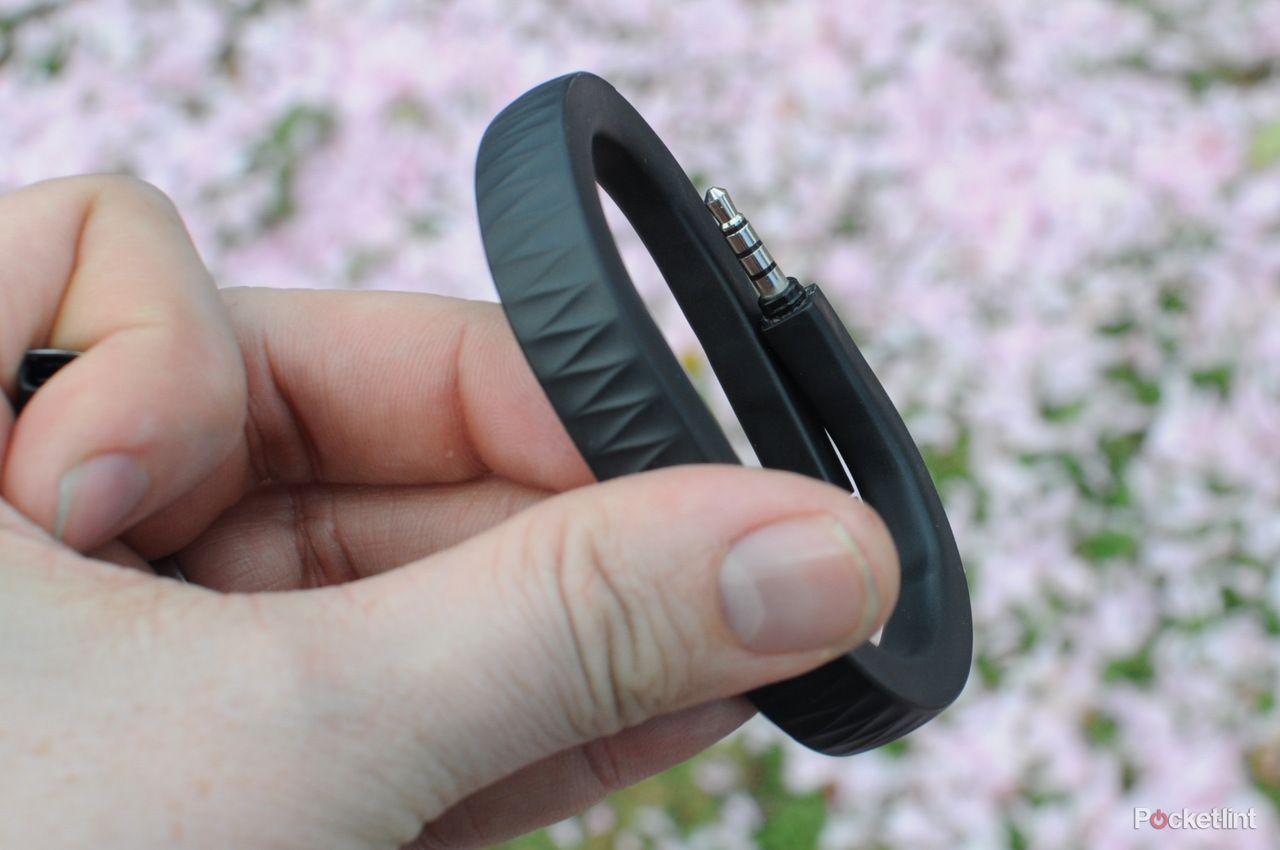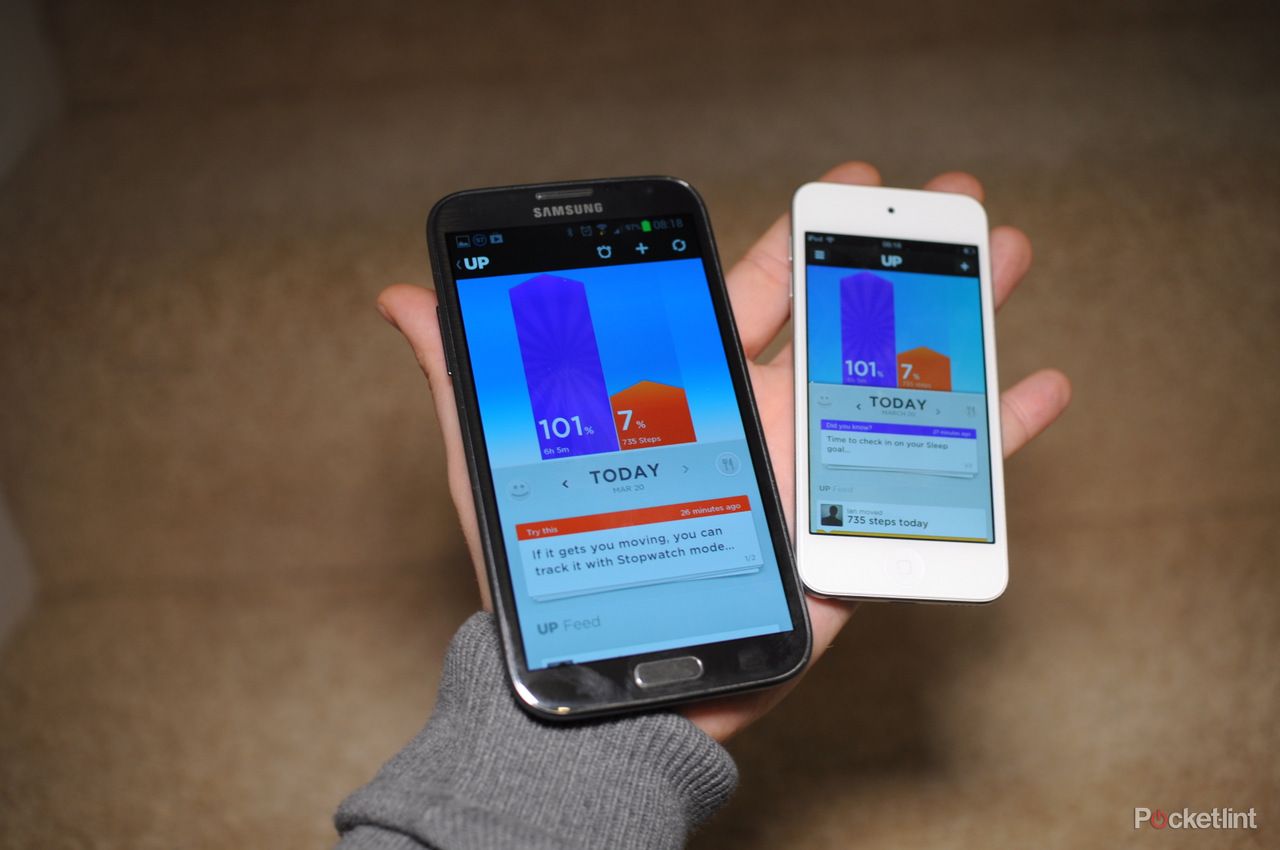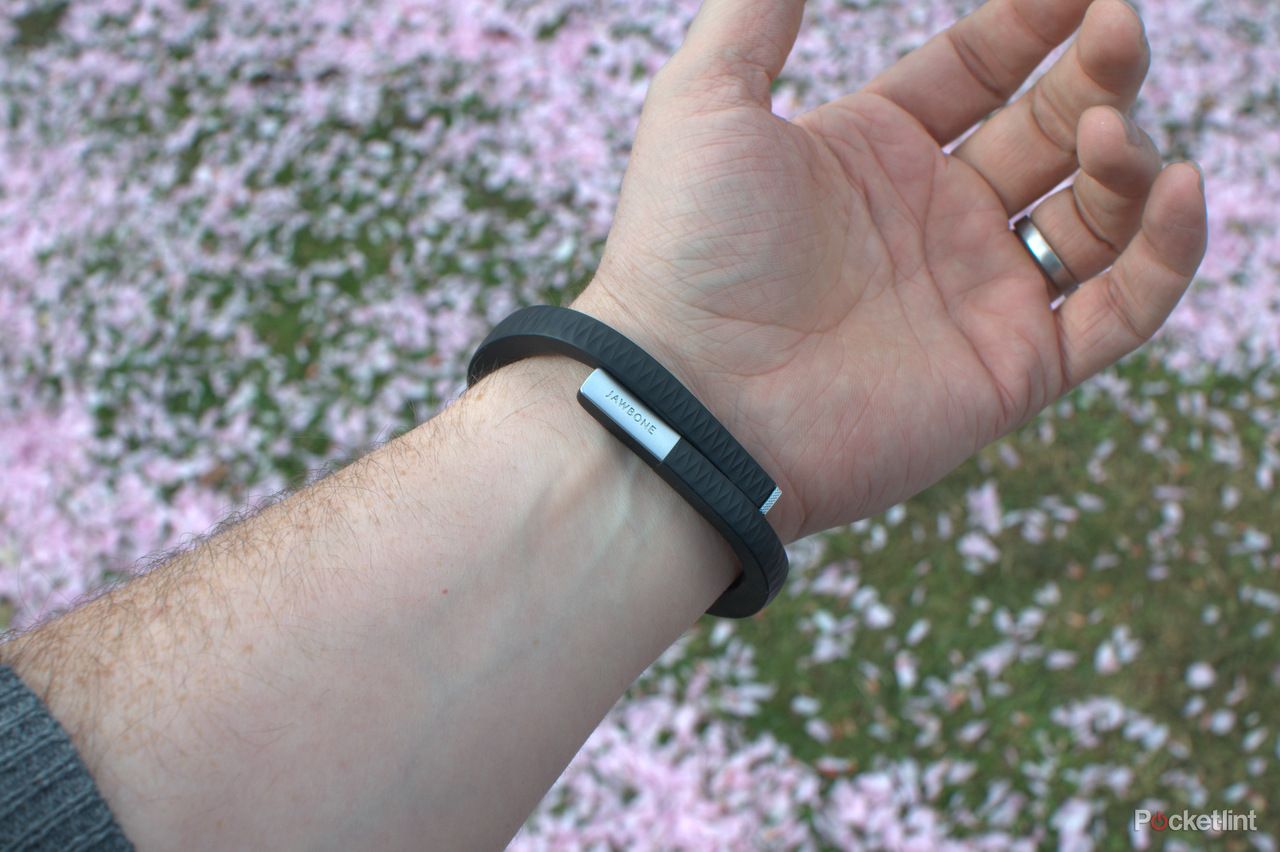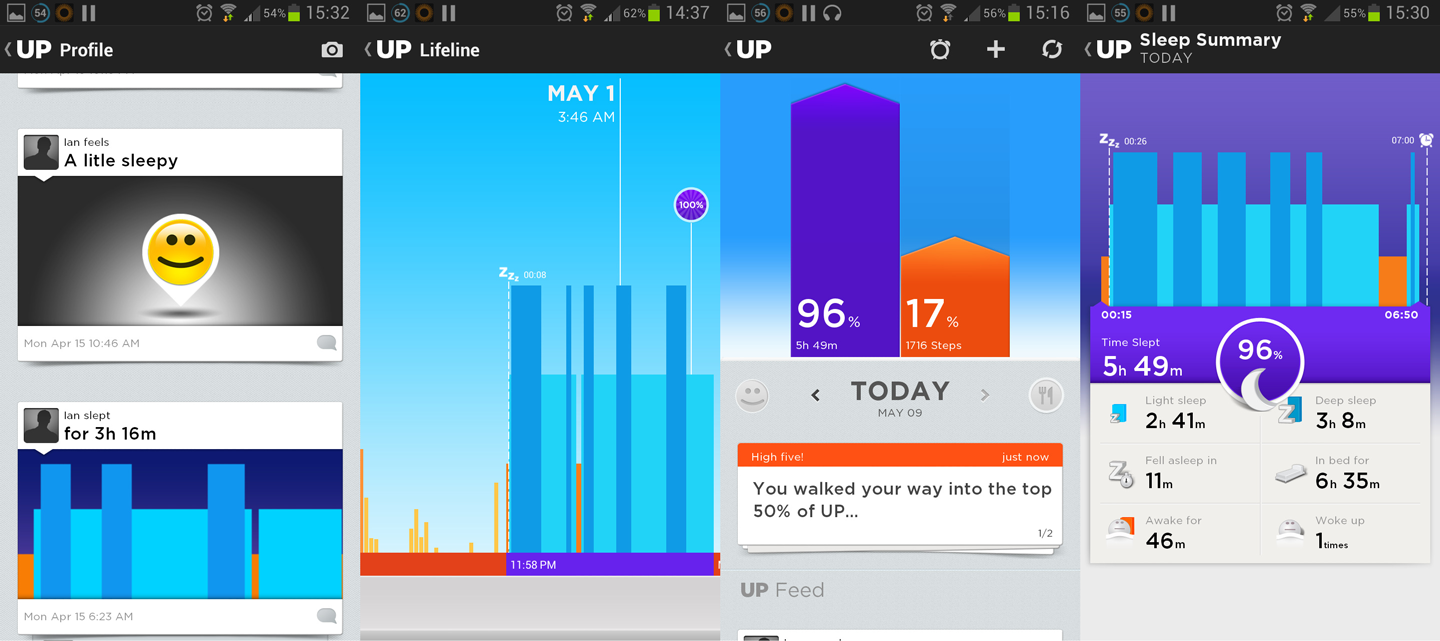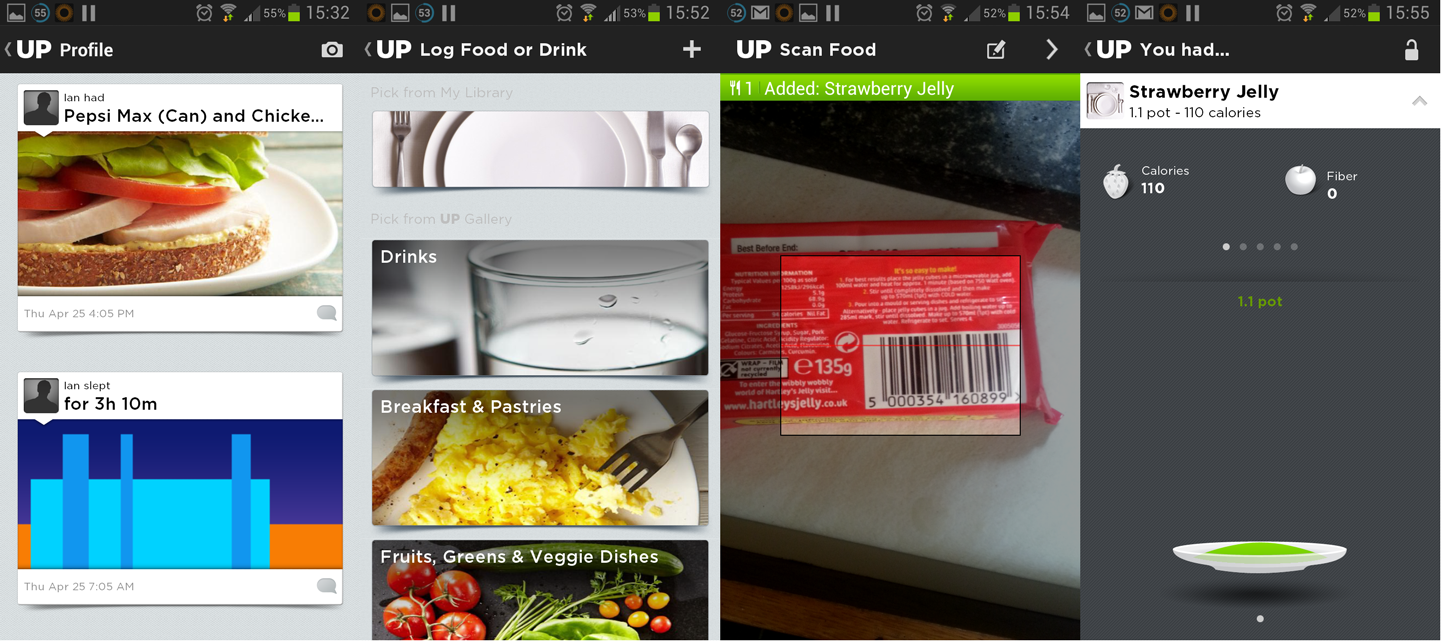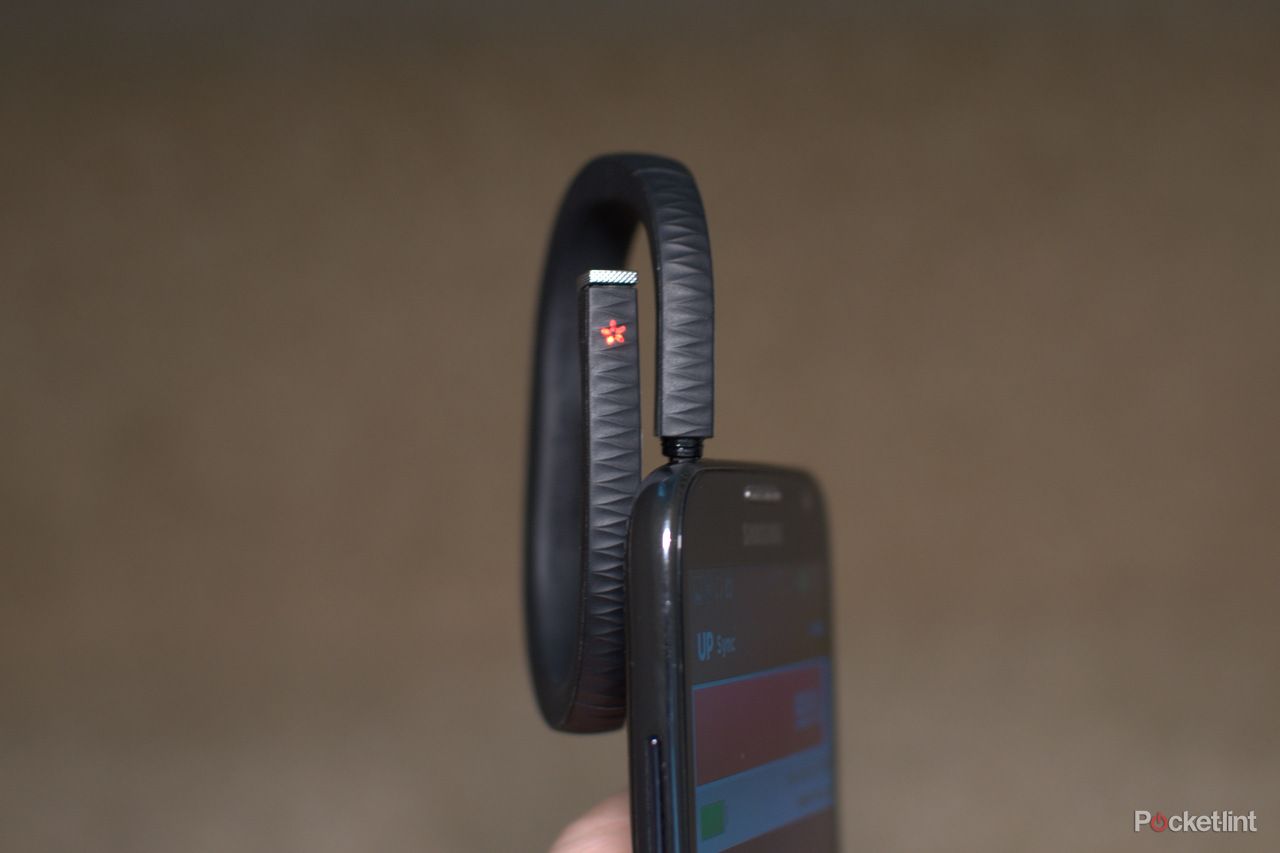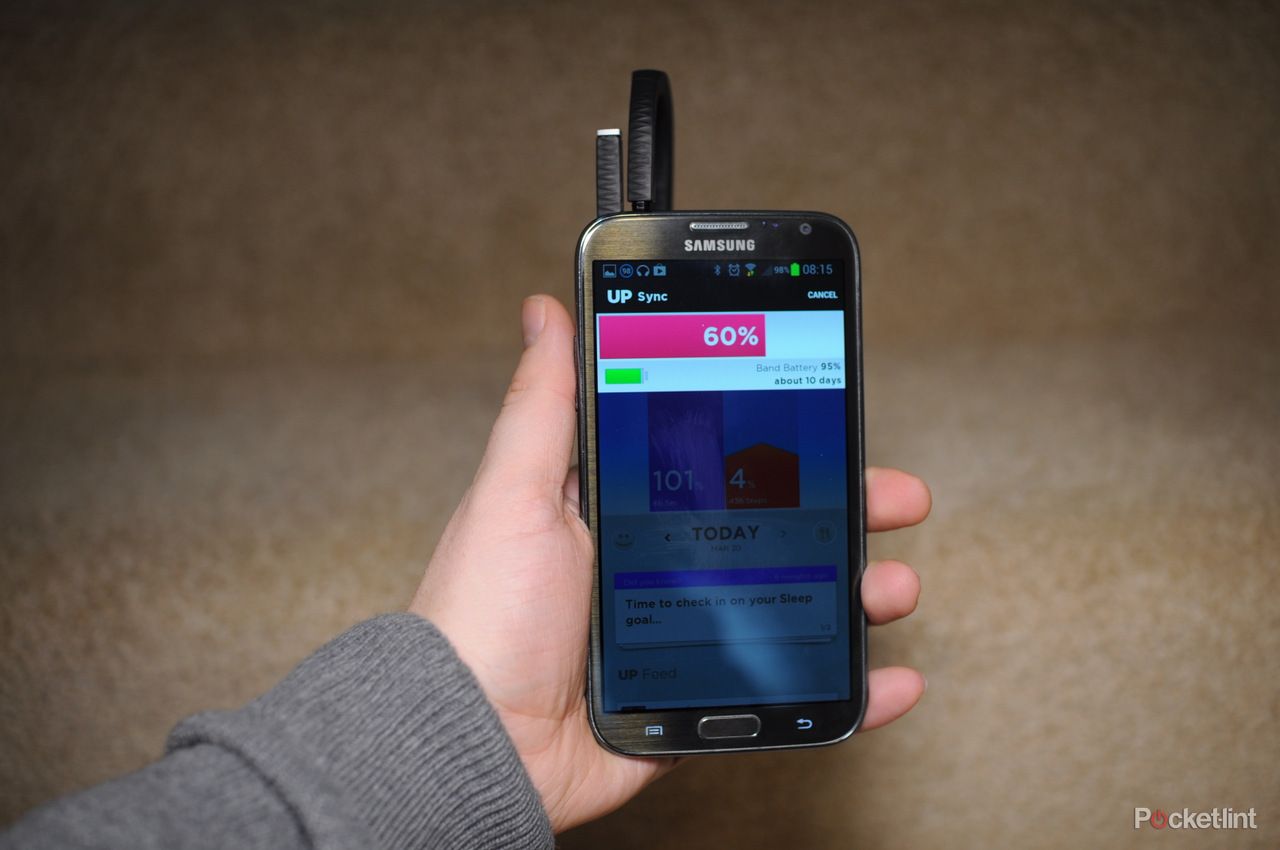People in the know suggest that we need to walk about 10,000 steps a day, to have any chance of living long enough to collect our pension. Some of us, no pointing of fingers, struggle even with that. With jobs that see us sitting at desks all day, it can be hard to get the exercise we need.
Our quick take
We found ourselves quickly becoming used to wearing the Up. Yet even now, there are times when we notice it. Typing on a laptop can sometimes be bothersome, with it clattering away on the wrist rest, but apart from that it's comfortable to wear, light and hassle free.
The information it gives you may not be bang-on accurate, but it's really good at making you think about what you're doing with both diet, and exercise, and thinking about things is the start of changing your attitude.
Operationally, we really like the Up app. We think it's a bit nicer on iOS than it is on Android, but the latter is much newer, and needs some time to bed in. Be aware too, that it doesn't work on every phone. A Samsung Galaxy S4 we tried refused to work, even after the update that promised to add support for it.
As a serious tool for exercise, Up loses out to the GPS watches like those from Garmin and Polar, but as something to keep you motivated, we think it's a solid choice, and a lot cheaper too.
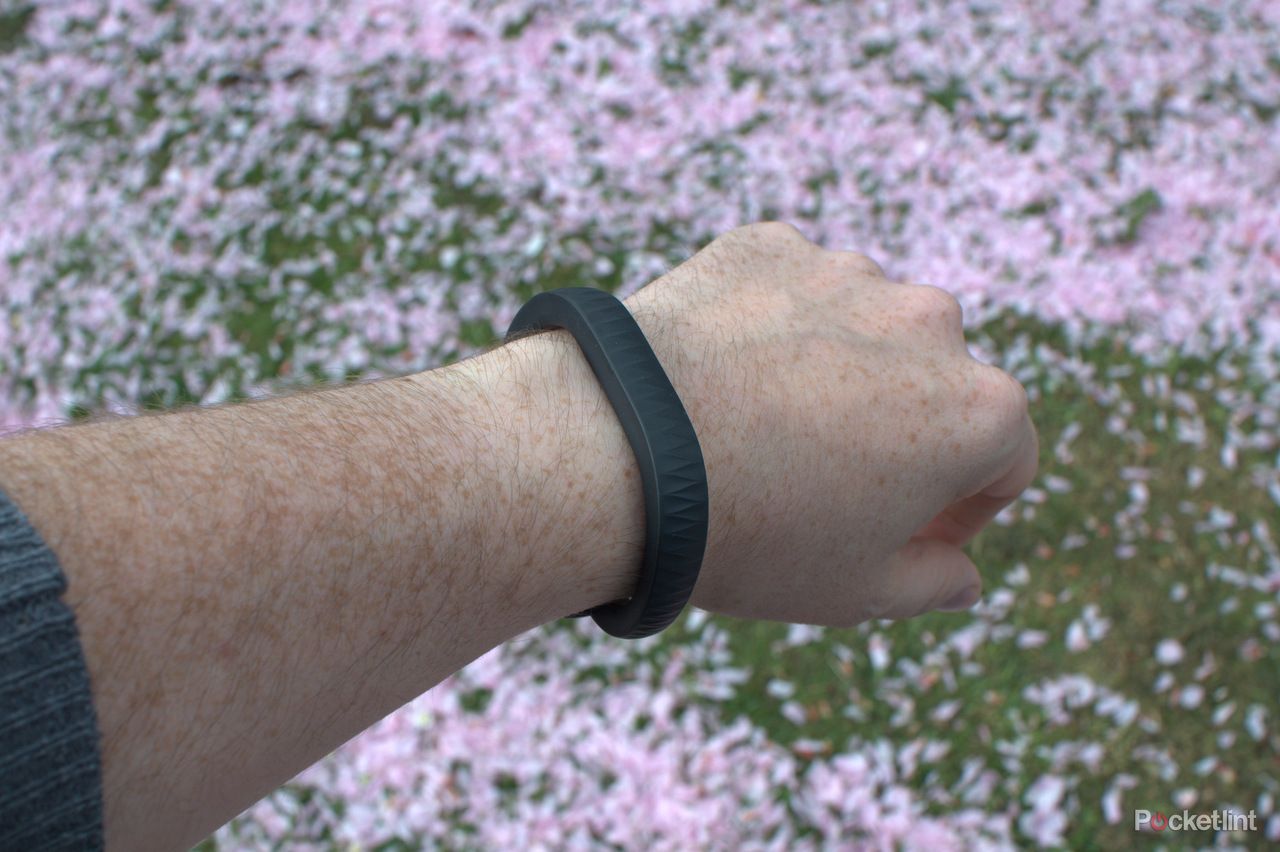
Jawbone Up (2013) - 4.0 / 5
| FOR | AGAINST |
|---|---|
|
|
Jawbone Up (2013)
Jawbone's Up is designed to do one thing, and that's keep us motivated. It does that through tracking what you do, and giving you advice and goals to reach. It does this from your wrist, in the form of a coloured band and an app on your phone, which work together to help keep you hitting targets, and hopefully staying fit.
We've been trying it out for a while now to see how effective it is at pushing us, and what the service is like overall.
This version of the Up was released in 2012 in the US, and came to the UK late March 2013. If you're interested, you can read our review of the original version.
Design and comfort
No one will spot your Up once you've got it on. It looks like a charity wristband, rubber friendship bracelet or any other standard wrist-based apparel. The design is simple: there's a sort of raised pattern on the surface to make it interesting, and the ends of the "band" are silver tipped. One is a button, the other is a cap that hides a sync connection that plugs into the headphone jack of your phone.
There's a light too. You won't see it very often, but it can produce either green or red colours, and these are used to give your various notifications about the band status and what mode you're in.
You can pick one of eight colours for your Up. They follow the usual Jawbone style and are interesting and bright colours. Red and blue both look great, and if you can pull it off, orange does too. It's worth bearing colour choice in mind though, as you need to wear Up every day to get the most out of it, so picking a bright colour might make you less inclined to do that.
As well as the colours, there are three sizes. There's a method of measuring that involves a bit of string, which you can see on the Jawbone website, but it's not very complicated and if you try each one on in a shop, you'll more than likely know which you prefer immediately.
In terms of comfort, we think it's pretty good. We opted for the large size, but think we could have worn the medium and had a tighter, less intrusive band. The only problems we had with it was when we put on a jumper and it pulled off, or when we were typing for long periods and it sometimes got in the way. It's fine to sleep in though, and we hardly noticed it at all after the first few days.
App and syncing
The real strength of Up is the Android and iOS app. The Android app is new, and only launched when the Up came to the UK recently. It's a little less fluid than the iOS version, and there are a few little complaints, but nothing massive. We used both, and for now we'd chose the iOS version, but both do the job.
To get the Up to sync, you pop of the cap that protects the headphone style connector, and attach it to the headphone socket of your phone. The band's status LED will flash green and red, and you'll then be able to sync. On the iPhone it's automatic when you attach the Up, on Android you have to press "sync" to get it going.
One thing we love, is that all your data is stored in the cloud. That means you can sync one day on an Android phone, and the next on an iPhone. The data is collected online, and will be available to view on both devices. It's a very cool system.
If motivation is lacking, you can join with friends to see how they're getting on. You can even make a team of people. For us, this is a bit of a no-go, we'd rather keep our shameful stats to ourselves, but others might enjoy the community spirit.
Movement tracking
Probably the number one feature of the Up is its physical activity tracking. For the most part, the Up is a pedometer, and little more. It's capable of monitoring how much you move, and it can take the movement and make a guess about what you're doing. For walking, presumably, it's looking for arms swinging back and forward. Obviously, Jawbone doesn't really talk about how it works, but there are a lot of patents protecting what it does, so we think it's fair to assume that it's a bit cleverer than a standard pedometer.
With that said, its location on your wrist must cause some level of inaccuracy. For example, as home-workers, we can sometimes manage a day with what we'd assume is as few as 1000 steps. However, Up never really counted less than 5,000. This is reasonable enough, after all, it can't tell exactly what you're doing, but we think to get the right level of exercise each day, you'd probably want to aim at closer to 20,000 steps than 10,000.
Given the way Up detects movement, that makes it quite useless for cycling or other activities. Jawbone has sensibly thought of a nifty solution to this problem, because you can tell the Up that you're in "activity" mode, with a couple of button presses, and it will then log the duration of that exercise. Later, when you sync, you can tell it what sort of exercise you did, and how vigorous it was. We like this, and it makes adding exercise sessions a lot simpler.
Sleep tracking
One of the things we most like about Up, is the sleep tracking. Sleep is quite an important part of life, and not getting enough of it can be a bit of a problem for all the obvious reasons. That said, we think sleep tracking is a "for interest" pursuit, rather than one you should take too seriously. It's interesting to see how your night went, and that's how we used the system.
What we did notice was that it was incredibly good at telling when we were and were not asleep. So, from that perspective, it's handy to see if you woke up in the night, and how long it took you to go to sleep. We compared it to our own notes about sleep and waking times, and we couldn't fault it.
Where the system goes a bit wobbly is in the sleep cycle area. There's considerable debate about sleep patterns, and how much of the various kinds of sleep you need, but the Up seems to be able to use your sleep movement to tell if you're deep asleep, or not. This means you get a number at the end of the night for how much light and deep sleep you get. The app tells us that you need three hours of deep sleep to be at your best. We sometimes failed at this, but then we have an unpredictable toddler in the house.
As part of the sleep tracking, the Up can also wake you using its vibrating alert. For this, you can tell it to pick a time when you're in light sleep, and for this to work you give it a timeframe when it can wake you, and it will pick the best time according to your sleep patterns. Honestly, because our alarm screams our name at an unpredictable time every morning, we have no idea if it works. That said, the vibrate possibly won't wake you every time, so you'd be unwise to rely on it if you've got a job interview.
There is also a power nap feature too which uses the same principal to wake you after you've had the perfect amount of sleep. You can change this, and give it a window in which you need to sleep, or you can just let it wake you when it thinks you're ready. The biggest problem with this feature is you need to set it through your phone, sync the band, then try and nap. It's a bit of a faff when you're feeling a bit dozy.
Diet tracking
Anyone who has done Weight Watchers or the like will know the drill when it comes to losing weight. You count every bit of of food you put in your mouth, get some exercise and try to make sure you burn more calories than you consume.
What's cool about Up is that you can take photos of your food from within the app, and then put in values for what you've eaten. You'll more than likely have to do this manually, but there is pre-stored nutritional information too, so you shouldn't have to spend your whole life entering grams of saturated fat.
There's also a barcode scanner, which enables you to take pre-prepared foods and look them up in the Up database. If this continues to be maintained, and added to, then it could become a huge part of the Up system, because it's a really good way of making sure you stay within your allowances.
Of course, all of this comes down to counting calories, which is often not the best way to lose weight. There's a lot more involved, and it requires people learn about food, but the handy thing is Jawbone provides tips and help, which could be used to help guide people to a better diet.
No Bluetooth
Surprisingly for Jawbone, there's no Bluetooth sync here. Give the company's investment in Bluetooth audio and accessories, we're a bit surprised, but we can see why. The company also told us that battery life was a real consideration for Up, so it follows that using Bluetooth would be a bad idea when it comes to longevity.
This does make syncing a little bit more annoying, and there have been times when we've though "Bah, can't be bothered". For the most part, that's not a problem though and assuming nothing bad happens to your band, you shouldn't lose any data from not syncing. Jawbone suggests you do it twice a day.
Reliability and battery life
After the first-generation Up bowed out in such spectacular style the firm has been hard at work making sure the same fate didn't befall the new one. To that end, the company told us that it had put the new device through testing that lasted nearly a year, and amounted to many thousands of hours of testing time, in total.
Now, we've tested it in real life, and we've found that it's absolutely fine. In our first review, we also had no problems, and after talking to Jawbone about it, the company told us that the original issue was caused by water damaging the battery. So, the new and updated model is tested more stringently, and copes much better with moisture.
We avoided showering with ours on, but a couple of times at baby bath time we plunged it into the water without thinking. We've seen no significant problems. This is a device that you wear all the time, and there's no need to nanny it.
With battery life, Jawbone says it should last 10 days, and that was very much our experience with Up. Charging is quick too, so you shouldn't need to be without the band for very long. For us, this is one of the advantages of Up, and it means that using it overnight for sleep tracking is a reality too as it doesn't need a daily charge.
Jawbone Up (2013)
To recap
Simple to use, plenty of nice features and a good social element make this a good way to stay motivated about getting decent amounts of activity. The sleep monitor is also quite handy, and being able to track how you feel with a relationship to what you eat, how much you exercise and sleep is a nifty idea

